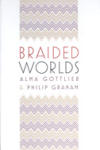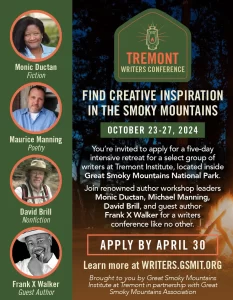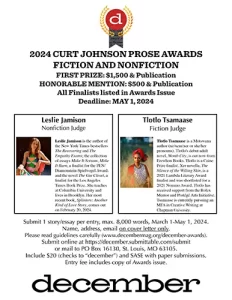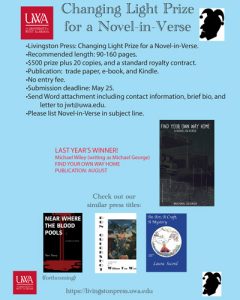Braided Worlds
A braid is a fantastic narrative metaphor for complex collections of worldviews. Through the plaited entity, we can see independent strands woven together, each contributing to the creation of something that is more than its single self. We can see complex knotting and intricate interlacing that highlight the skill of the weaver (or storyteller, in our metaphor). A single-strand narrative is a ponytail—simple, standard, and fairly unimaginative. A braided narrative, however, is a building block—one that leads to unending possibilities of elaborate designs and coiffures. In Braided Worlds, their ethnography-reflection-travel memoir, Alma Gottlieb and Philip Graham work extremely well with the metaphor of a braided narrative. Their collections of stories from their time with the Beng in Côte d’Ivoire clearly reflect their commitment to “re-create the immediacy of the present-moment external drama of our lives among the Beng people, as well as the drama of our internal states.”
A braid is a fantastic narrative metaphor for complex collections of worldviews. Through the plaited entity, we can see independent strands woven together, each contributing to the creation of something that is more than its single self. We can see complex knotting and intricate interlacing that highlight the skill of the weaver (or storyteller, in our metaphor). A single-strand narrative is a ponytail—simple, standard, and fairly unimaginative. A braided narrative, however, is a building block—one that leads to unending possibilities of elaborate designs and coiffures. In Braided Worlds, their ethnography-reflection-travel memoir, Alma Gottlieb and Philip Graham work extremely well with the metaphor of a braided narrative. Their collections of stories from their time with the Beng in Côte d’Ivoire clearly reflect their commitment to “re-create the immediacy of the present-moment external drama of our lives among the Beng people, as well as the drama of our internal states.”
The authors bring a unique set of skills and expectations to their collaborative writing effort. Gottlieb (an anthropologist) offers her ethnographic field expertise and the commitment of continued work to make sense of the socio-cultural complexities of the Beng. Graham, her husband and a writer, brings his sense of narrative structure. Indeed, if one were to step back and reflect about the levels of “other” in the Gottlieb-Graham-Beng relationships, Braided Worlds offers the reader a great sense of what being “outside” of different circles means. For example, Gottlieb and Graham are “other” to the Beng, the Beng are “other” to most Western audiences—and even Graham sits a bit as an “other” since his work with the Beng doesn’t depend on the observer/observed interaction that Gottlieb’s does. The authors point out that this particular book picks up where their previous co-authored book, Parallel Worlds: An Anthropologist and a Writer Encounter Africa, ends. These sets of experiences seek to bring together (weave or braid together, perhaps?) experiences and people that were running more “in parallel” in their previous work.
What does the book do, really? Fundamentally, it is organized thematically around life history, the supernatural, emotional expression, and the importance of place—all of these themes focused on the Beng and the evolution of Gottlieb-Graham’s fourteen-year relationship with them. Within each of these themes, the authors offer their own voices to events and recollections. They switch off as narrators, giving each other the opportunity to pull a different strand of their braid into its proper place in these narrative recollections. Moreover, and perhaps more significantly, it is abundantly clear that the authors want the reader to be able to have a sympathetic viewpoint and easily accessible window into the life and thinking of the Beng—they explain, describe, and offer reflection about their time with the Beng without being apologetic. We see Gottlieb’s anthropological training and commitment completely here.
However, in many ways, the book arguably also reflects the turmoil, the confusion, and the conflicting commitments within the Beng communities, Côte d’Ivoire itself, and the underlying complexities of Gottlieb’s and Graham’s work. Braided Worlds, to continue its role in metaphor, could be considered a microcosm of the unrest and conflict on the myriad of cultural and political levels the authors write to. The book seems to suffer from a bit of its own identity crisis—not, perhaps, unlike the different strands the authors bring together. Braided Worlds is neither, truly, a travel memoir nor an anthropological analysis. It jumps from one field experience to another. It seems to require a willingness on the part of the reader that all of these threads will be brought together by the end of the book (by the end of the “field season?”) and leaves the reader wanting a bit more structure and direction. In short, it is more than a collection of family stories and less than a textbook—but that leave a lot of literary space in between. (Indeed, Gottlieb and Graham charmingly use their son, Nathaniel, as a proxy narrator for the reader. Nathaniel’s first encounter with the Beng is most likely the reader’s first encounter with the culture, letting us see its complexity through the eyes of a six-year-old.)
What Braided Worlds perhaps lacks is a commitment to a literary genre. The authors seem to want the legitimacy of their credentials (e.g. the writing and anthropological credentials) without the accountability toward their disciplines. The reader feels that there is a sense of franticness and urgent necessity that the authors write toward—an imperative to tell these stories and to make sure that others know that the stories have been told, even if the telling of these stories pulls the reader in a myriad of literary directions.
However, Braided Worlds offers a unique opportunity for readers to encounter the plaited complexity of the Beng world and the turbulent politics from Côte d’Ivoire that surround the community. The collection gives readers a chance to “see behind the curtain” of anthropological research and understand what might motivate some anthropological studies (in the case of Gottlieb) or some broader writing projects (in the case of Graham). Braided Worlds does nothing if not highlight the “quest for cultural understanding [that] deepens and complicates in such a way that surprises are always possible.”





